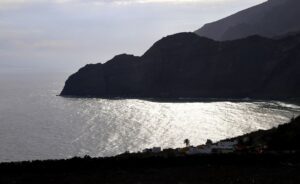
PROCEEDINGS OF THE NATIONAL ACADEMY OF SCIENCES—A study* uncovers the timeline of human colonization of the Canary Islands. Indigenous people of the Canary Islands are descended from the North African Berber population, and the region was also visited and explored by Romans. Previous studies using radiocarbon data have failed to unambiguously establish the timing of arrival of human groups and colonization of the Canary Islands. Jonathan Santana and colleagues developed Bayesian models of colonization from reliable radiocarbon data, correcting for a phenomenon termed the marine reservoir effect. The effect is produced when atmospheric CO2 slowly mixes with the ocean surface, resulting in inaccurate radiocarbon data. Further, the authors focused on radiocarbon-dated objects that were clearly related to human activities. The analysis revealed that Romans first arrived on the Canary Islands during the 1st century BCE and that North African Berber groups arrived later and permanently settled the region between the 1st and 4th centuries CE. The earliest Berber settlement was on the island of Lanzarote. The Roman and Berber peoples likely did not inhabit the islands simultaneously, and Berber groups colonized the islands rapidly. According to the authors, the study suggests that Berbers traveled to the Canary Islands independently and were not moved to the archipelago by the Romans, as previously thought.
____________________________

View of the Canary Islands coast. Guillaume Baviere, CC BY-SA 4.0, Wikimedia Commons
____________________________
Article Source: PROCEEDINGS OF THE NATIONAL ACADEMY OF SCIENCES news release.
*“The chronology of the human colonization of the Canary Islands,” by Jonathan Santana et al., Proceedings of the National Academy of Sciences, 1-Jul-2024. 0.1073/pnas.2302924121
____________________________
Advertisement





